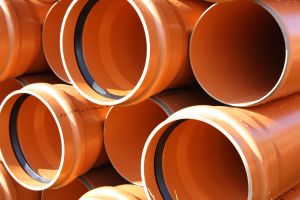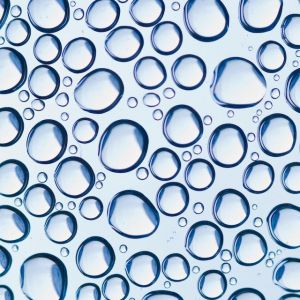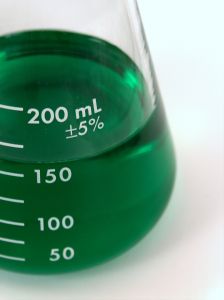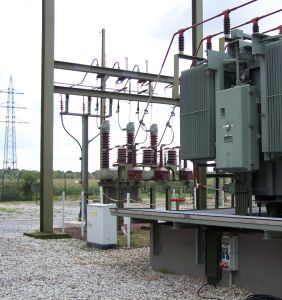Hello everyone,
With Q3 2013 behind us and improving economic trends in the eurozone & U.S., Abenomics kindling a boost in economic activity with a far more volatile financial environment in Japan and conflicting views on China faltering; focus is on the final thrust by most nations to end 2013 on a healthier note than when the year began.
EUROZONE – COMPELLING
The World Economic Forum has come out with its latest 2013-14 Global Competitive Index of countries. As in previous years, the world’s top 10 remain dominated by a number of European countries with Switzerland (in pole position), Finland, Germany, Sweden, the Netherlands and United Kingdom confirming their places among the most competitive economies. Three Asian countries also figure in the top 10 with Singapore remaining the second-most competitive economy globally and Hong Kong & Japan occupying the 7th and 9th spots respectively. After having declined for four consecutive years, the U.S. has reversed its downward trend, rising by two spots to take the 5th position ahead of the Netherlands and Sweden.
It may not have been a great year for the eurozone, but competitiveness says it all and underscores its importance in the global economy.
ADDING A NEW DIMENSION
In one of the earlier posts, I had stated that water would emerge as the new oil of the future. Transportation of water is thus a key factor to be dealt with and there is no dearth of piping materials – be it metals, plastic or composites. Pressure pipes come in many forms – from oriented PVC to fiber reinforced composites. A new innovative composite pressure pipe is made of continuous glass fiber reinforced high density polyethylene (HDPE) composite tape which is wound around a specially designed extruded thin-wall HDPE thermoplastic liner and heat treated in a proprietary process [Pipe and Profile Extrusion]. The pipe construction adds an outer layer of HDPE film to protect the system from both ultraviolet degradation and abrasion damage. At 4.26lbs/ft., the pipe is lighter than a pressure rated composite and plastic pipe of comparable diameter [Ticona]. Two people can easily lift and carry the pipe, thereby eliminating costs associated with unloading equipment, increasing safety and minimizing work site damage and reclamation costs. Rated at 250psi operating pressure, the 10.5 inch diameter pipe is designed for general water transport infrastructure including distribution systems, oil and gas operations, hydraulic fracturing feed water and produced water, large irrigation systems, tank farm operations and de-watering systems. Burst pressure of the finished pipe can be increased from the current 500psi by varying the number of layers of continuous fiber reinforced thermoplastic tape on the thin-walled HDPE liner.
The high demand for piping in the U.S. for fracking alone is significant. The icing on the cake is the abundance of HDPE that would be available down the line using ethane (shale gas feedstock) in lieu of conventional naphtha (crude oil feedstock).
SMC WITH GLASS BUBBLES
Thermoplastic composites have been making inroads in the automotive sector and challenging the traditional workhorse – thermosetting SMC. Not to be left behind, a custom SMC manufacturer in the U.S. has recently developed an ultra-low density SMC with high surface quality that is expected to find wide applications in the transportation and general industrial markets [Plastics Today]. Use of glass microspheres has resulted in attaining a specific gravity of 1.18 for the SMC which is at least 38% lower than the industry standard SMC formulations. The new SMC formulation reportedly offers outstanding toughness and intended for high impact applications. Its proprietary technology improves the resin-to-glass bonding strength on a micro-structural level by about 50%.
The dogged determination with which carbon fiber & resin producers and CFRP processors are collaborating to reduce cycle time of molded parts for the automotive sector is admirable. Innovative mold technology has resulted in automated manufacture of a CFRP vehicle engine hood with a cycle time of just 15 minutes. Featured recently at the Composites Europe 2013 show, the mold comprises a mold frame and two mold halves with an integrated sensor technology. The combined fixing and ejection units allow double-sided impregnation of the preform, enabling complex sandwich parts to be produced in a single process step [Plastics Today]. The mold surface topography has been optimized to such an extent that direct surface coating of the CFRP engine hood is possible – a major step towards efficient production as it involves dispensing with post-treatment of the part prior to applying the surface coating. Curved contours and stiffening structures improve the static and dynamic properties of the hood. The sandwich structure incorporates necessary fixing elements to avoid need for subsequent assembly of additional elements and enabling weight reduction of almost 60%.
Cycle time has always been the bane in greater use of CFRP in the automotive sector…not so anymore.
AN ODD COUPLE ? NAAH !
PVC thermoplastic resin reinforced with long glass fiber ? The twain have generally been considered an odd couple. Considering the spate of technological developments, it was therefore not surprising to hear Solvay‘s recent announcement of an innovative vinyl composite technology involving continuous long glass fibers impregnated with PVC powder that provide fire resistance, stiffness and high impact resistance. Target market sectors include marine, construction and automotive.
Timely reminder of the Adidas slogan… impossible is nothing.
Kawasaki Hydromechanics Corporation, Tokyo recently delivered a large composite molding system incorporating a 35,000kN hydraulic press to Japan’s National Composite Center (NCC). The system incorporates various processing options, including an in-line compounding extruder enabling long fiber thermoplastic (LFT-D) molding, RTM unit and an infrared heater for composite sheets. Priced at US$9 million, the molding machine is tailored for development of various large mass-production processes and able to mold large components up to 3 x 2 Meters in dimension. The molding system will reduce production cost through CFRP molding enabled by the LFT-D unit. By combining an IR heater and RTM injector, it will enable testing and selection of CFRP molding techniques most suitable for the shape, strength and cost profile of individual components [Plastics Today].
Rivaling the Germans when it comes to gigantic multi-functional hydraulic presses for composites ? A far cry and welcome change from a nation that has always prided itself in miniaturizing components and products especially in electronics and appliances sectors.
PERMUTATIONS & COMBINATIONS
Brace yourself for more fiber-resin variations and molding techniques combos. The prototype of a rear seatback using new continuous fiber-reinforced thermoplastic woven fabrics overmolded with specially formulated high-impact modified Polyamide 6 was recently staged in Germany [Plastics Today]. BASF also showcased a test part using its Combination of Inmold-forming and Overmolding process (CIFO) consisting of a 1.5mm thick formed laminate and up to 3mm thick molded-on functional elements such as ribs and cages. Demonstrating the characteristics of composite part manufacturing, special features of the component include sealing around the edges, long flow paths, formed holes, rib array & a ribbed U-profile beam. The same concept extending to polyurethane and epoxy resin systems with continuous fiber reinforcement is currently in the works.
CFRP matching aluminum and steel in torsional stiffness and that too with significant weight reduction ? An engine X brace with improved torsional stiffness is now available in CFRP as an aftermarket bolt-on. Aluminum replaced steel initially and cut weight by 40%. Now CFRP has replaced aluminum with a 50% weight reduction. Per Chrysler, a car with the part was subjected to a 500 mile road test and a thermal test was conducted to check for heat issues – none were observed [Plastics Today]. The estimated temperature requirement for the part is in excess of 230°F. Work is in progress for an improved RTM system with high-pressure vacuum assist. The brace uses 102 pieces of CF, varying in thickness from 2.60 to 2.75 mm.
LIVE AND LET LIVE
With all the euphoria surrounding the extensive use of composites ( around 50%) in the Boeing 787 and Airbus A350; aluminum is staging a comeback. An aluminum-magnesium-scandium alloy is under development that is expected to be 5% lighter than conventional aircraft aluminum and could be ready for the next generation jets. The new alloy that faces tests in labs and regulatory approval is also more expensive that conventional aluminum [Yahoo Finance].
As to the aircraft of tomorrow, it is bound to be an aluminum-composite hybrid according to industry experts.
September witnessed a flurry of price increase announcements for thermosetting resins in Europe by leading resin producers – the key reason being feedstock prices, especially benzene and its derivatives. Polypropylene (PP) price volatility in NA continues and this trend is likely to carry on until new propylene monomer capacity comes onstream in 2015. PP growth is thus likely to be impeded by supply and price in the short/medium term.
POWER IN NATURAL GAS
Natural gas is poised to displace coal as the world’s second favorite fuel by 2040. Natural gas demand is expected to grow 65% over the next 30 years, per ExxonMobil. This implies that the cleaner-burning fuel would provide 25% of world’s energy by 2040. Demand for natural gas is expected to come from a deeper penetration in electrical generation as it would be directly displacing coal [The Motley Fool].
Nothing is permanent except change – what can exemplify this classic cliche better than the September 30 news that Apple officially surpassed Coca-Cola (the brand that held the #1 position for 13 consecutive years) as the world’s top brand [Yahoo Finance] according to Interbrand.
Composites are still decades way from displacing traditional materials of construction in a major way….but the success rate in doing so during the past decade has been phenomenal. Case in point – the Boeing 787 and Airbus A350 airplanes that boast of around 50% composites.
Till the next post,
Cheers,
Email: SS@essjaycomposites.com
Twitter: @essjaycomposite
Website: www.essjaycomposites.com







You must be logged in to post a comment.